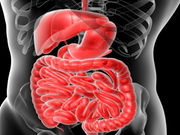Multiply recurrent CDI more likely in older patients, females, those who used antibiotics, PPIs
THURSDAY, July 6, 2017 (HealthDay News) — The annual incidence of Clostridium difficile infection (CDI) and multiply recurrent CDI (mrCDI) increased from 2001 to 2012, according to a study published online July 4 in the Annals of Internal Medicine.
Gene K. Ma, M.D., from the University of Pennsylvania Perelman School of Medicine in Philadelphia, and colleagues conducted a retrospective cohort study to examine whether the incidence of mrCDI is increasing in proportion to CDI. Data were included for 38,911,718 commercially insured patients, of whom 45,341 developed CDI.
The researchers found that from 2001 to 2012 there was an increase in the annual incidence of CDI and mrCDI by 42.7 and 188.8 percent, respectively, per 1,000 person-years. The increase in incidence of mrCDI was independent of known CDI risk factors. They also found that mrCDI development was more likely in those who were older (median age, 56.0 versus 49.0 years; adjusted odds ratio [aOR], 1.25 per 10-year increase in age), female (63.8 versus 58.7 percent; aOR, 1.24), and in those who had used antibiotics (72.3 versus 58.8 percent; aOR, 1.79), proton pump inhibitors (24.6 versus 18.2 percent; aOR, 1.14), or corticosteroids (18.3 versus 13.7 percent; aOR, 1.15) within 90 days of CDI diagnosis. Increased risk for mrCDI was also seen for chronic kidney disease (10.4 versus 5.6 percent; aOR, 1.49) and diagnosis in a nursing home (2.1 versus 0.6 percent; aOR, 1.99).
“Relative to CDI, mrCDI incidence has disproportionately increased, indicating a rising demand for mrCDI therapies,” the authors write.
Copyright © 2017 HealthDay. All rights reserved.








